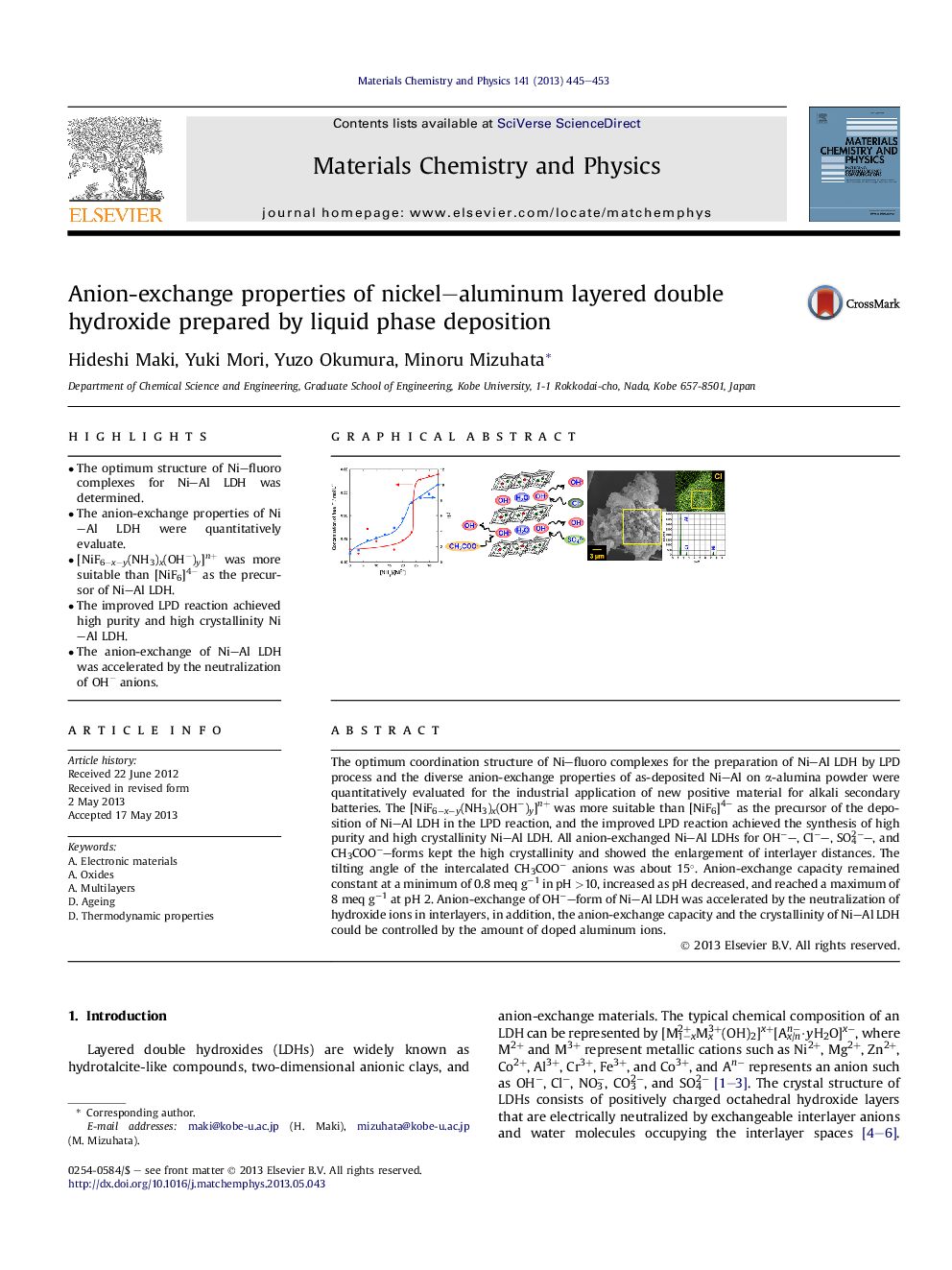| Article ID | Journal | Published Year | Pages | File Type |
|---|---|---|---|---|
| 1522685 | Materials Chemistry and Physics | 2013 | 9 Pages |
•The optimum structure of Ni–fluoro complexes for Ni–Al LDH was determined.•The anion-exchange properties of Ni–Al LDH were quantitatively evaluate.•[NiF6−x−y(NH3)x(OH−)y]n+ was more suitable than [NiF6]4− as the precursor of Ni–Al LDH.•The improved LPD reaction achieved high purity and high crystallinity Ni–Al LDH.•The anion-exchange of Ni–Al LDH was accelerated by the neutralization of OH− anions.
The optimum coordination structure of Ni–fluoro complexes for the preparation of Ni–Al LDH by LPD process and the diverse anion-exchange properties of as-deposited Ni–Al on α-alumina powder were quantitatively evaluated for the industrial application of new positive material for alkali secondary batteries. The [NiF6−x−y(NH3)x(OH−)y]n+ was more suitable than [NiF6]4− as the precursor of the deposition of Ni–Al LDH in the LPD reaction, and the improved LPD reaction achieved the synthesis of high purity and high crystallinity Ni–Al LDH. All anion-exchanged Ni–Al LDHs for OH−–, Cl−–, SO42−–, and CH3COO−–forms kept the high crystallinity and showed the enlargement of interlayer distances. The tilting angle of the intercalated CH3COO− anions was about 15°. Anion-exchange capacity remained constant at a minimum of 0.8 meq g−1 in pH >10, increased as pH decreased, and reached a maximum of 8 meq g−1 at pH 2. Anion-exchange of OH−–form of Ni–Al LDH was accelerated by the neutralization of hydroxide ions in interlayers, in addition, the anion-exchange capacity and the crystallinity of Ni–Al LDH could be controlled by the amount of doped aluminum ions.
Graphical abstractFigure optionsDownload full-size imageDownload as PowerPoint slide
